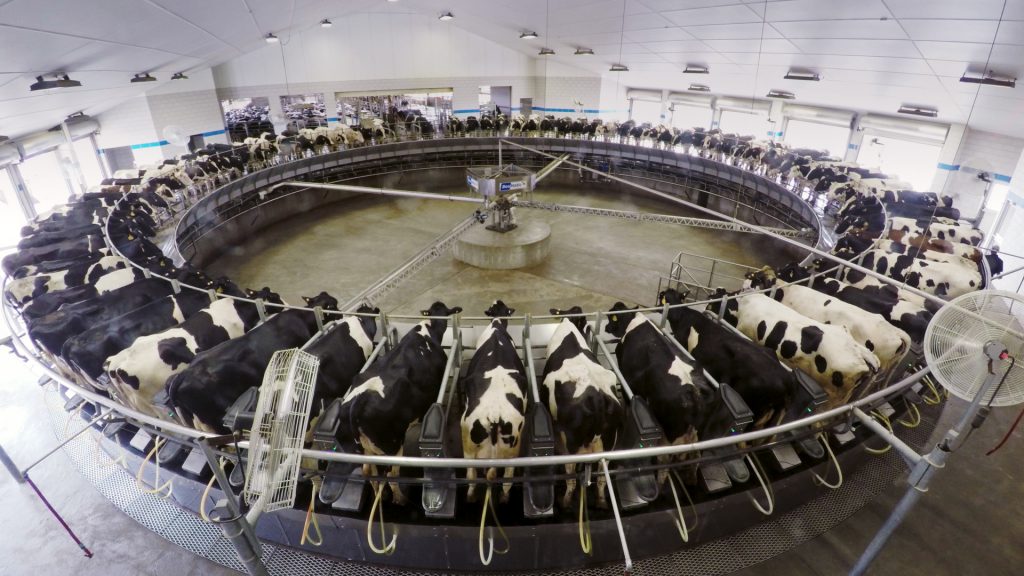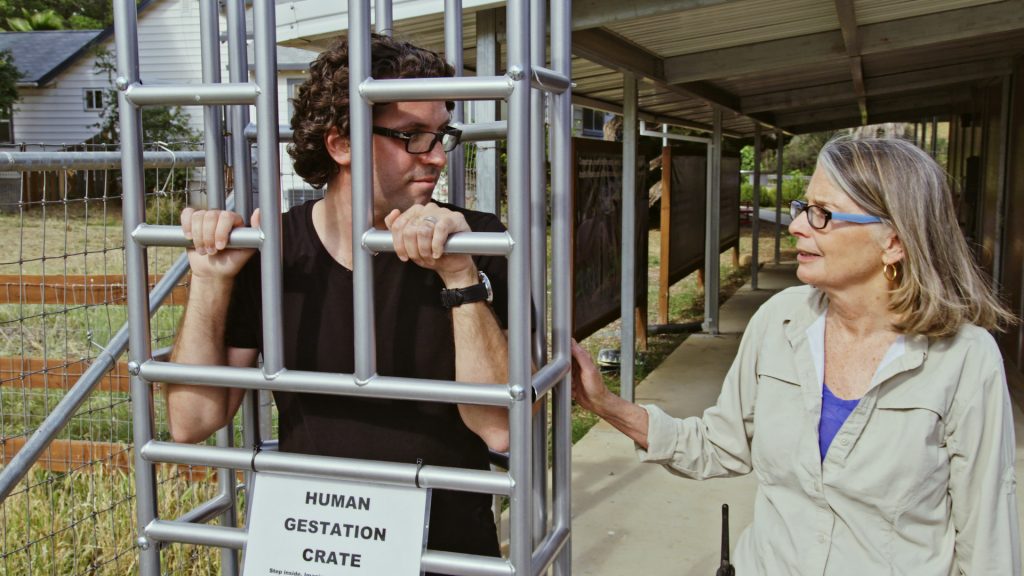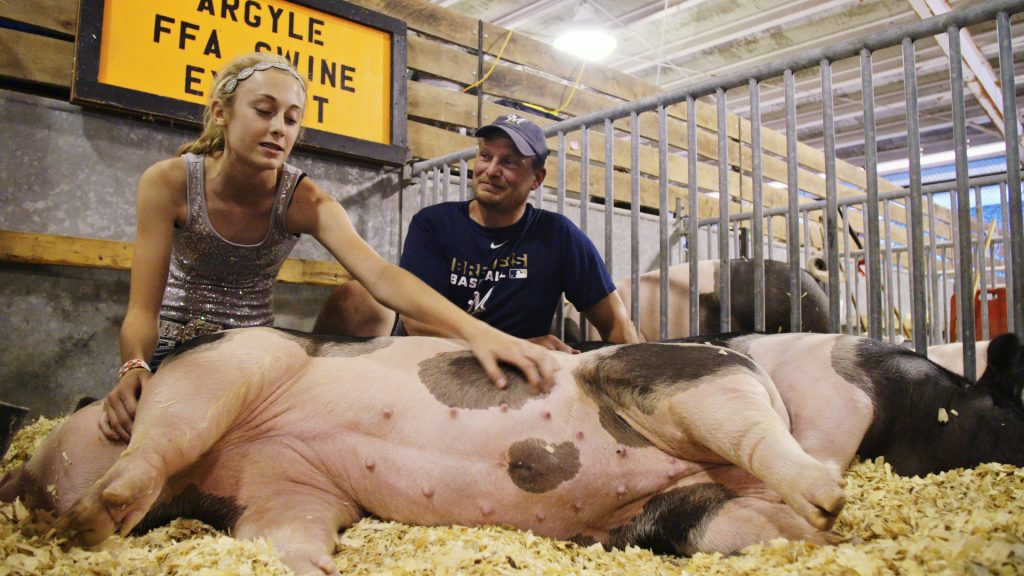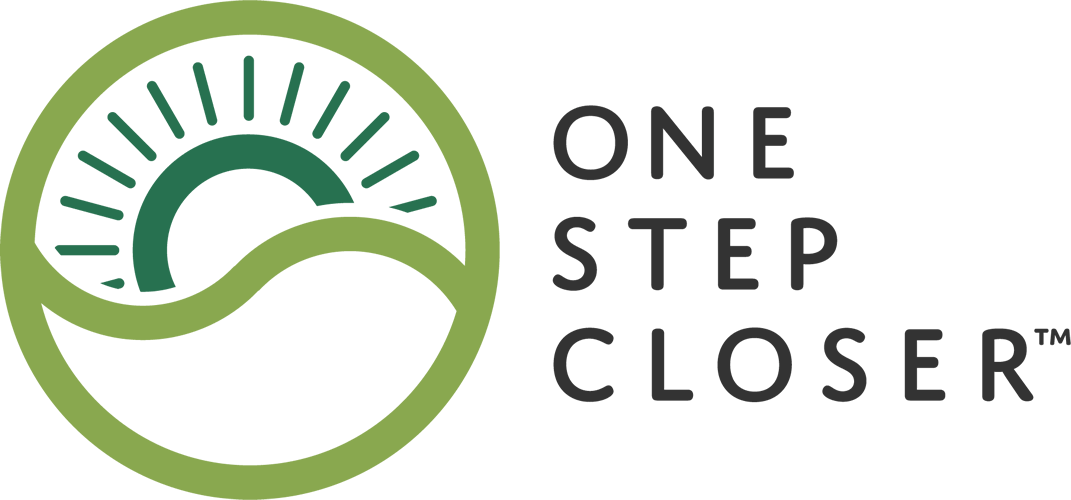August 18, 2017 by dev_team
Wielding Our Forks For Good
Forks for Good: I chose to adopt a vegan diet over 20 years ago, at a time in my life when I was radically reevaluating my patterns of thought and behavior, much of which was unconscious habit inherited from family and culture. I realized then that when I am in a grocery store or eating out, my ability to choose what I eat is a metaphorical knife I wield: I can use it to either slit an animal’s throat or just cut vegetables. I concluded that though I have the capacity to forget, shut down and not care about my consumption choices, I wanted to live in compassionate alignment with the vision that what we choose to eat matters. I decided to discipline myself to make conscious and ethical choices about what I would eat going forward. I haven’t regretted it since.
As time went on, I learned more and more about the impact of the standard American diet I was raised on. I learned that the destruction of the Amazonian rainforest—the lungs of the Earth—is an ecological catastrophe driven in large part by the rising global demand for meat. Old-growth rainforests and complex wildlife habitats are burned and cleared to create grazing land for cattle and massive monoculture deserts of soy for animal feed, while thousands on thousands of species perish. Massive amounts of carbon are released into the air not only by clear cutting rainforest, but also by industrial practices that ravage soils with carbon-intensive pesticide and fertilizer inputs, to grow grain that is inefficiently converted into animal protein and energy rather than used to feed people directly. The link between exploitation of animals and ecological destruction was clear 20 years ago—and has since only come more sharply into focus.
I learned about the horrors of factory farming of animals in cruel confinement systems, cages and feedlots, where they are denied the ability to express basic instinctual behaviors. These farm animals are made to suffer every day of their miserable lives. Over 95% of meat comes from animals raised this way, largely because consumers refuse to examine how the industrialization of cheap meat has come at the expense of animal life and suffering.

For the last two decades I have also worked alongside my brother, mother, sister and brother-in-law—all of them omnivores. While I’m often disappointed by their food choices when eating out, where only the worst factory farmed options usually exist, I’ve also learned to respect their choice to eat, when at home, only meat, dairy and egg products that come from farmers who uphold high animal welfare standards. My recent deep dive into regenerative organic agriculture has brought me into close contact with a community of farmers committed to raising animals humanely and sustainably on pasture, in ways that allow those animals to express their instinctive behaviors. So long as people dramatically reduce consumption of meat to sustainable levels, and choose to eat only from high animal welfare and pasture-based farms, then I consider myself in solidarity with them against the factory farm machine. I believe this ongoing dialogue with ethical omnivores and farmers has given me a balanced view of what it means to eat and farm ethically in this day and age, and earlier this year I published an article, titled Regenetarians Unite, summarizing my perspective.
A similar, balanced perspective is powerfully presented in the movie At The Fork, in which husband-and-wife filmmakers John Papola and Lisa Versaci visit different kinds of farms and speak with a wide array of farmers to discover what it means to eat meat and raise animals ethically. As in my family, John is an omnivore while Lisa is a vegan, and this tension between their dietary choices personalizes the narrative.
The journey begins with a look at gestation crates for sows—perhaps one of the most obviously cruel practices in modern factory farming. This method, which keeps gestating sows tightly confined for a period of weeks and months, has already been banned in nine states (Arizona, California, Colorado, Florida, Maine, Michigan, Ohio, Oregon and Rhode Island). John visits an animal sanctuary and experiences a “human gestation crate,” so that he can feel what it must be like for a pig to be so confined. Here and throughout the film we see John grapple with periods of compassion and insight, giving way to numbness and indifference—he understands these methods are cruel, but like most, he compartmentalizes and shuts down when it comes time to eat, succumbing to the inertia of family, traditions and the gustatory pleasure of eating meat. John makes a great “everyman,” able to grasp the consequences of meat-eating but still driven by his tastes and desires.

The filmmakers visit farmers that use gestation crates who try to rationalize them to be necessary and humane, as well as others who have eschewed the practice, allowing the pigs to express more of their natural behaviors. As we will see throughout the film, consumers’ demand for cheap meat is the primary driver for industrial practices, and if consumers are willing to pay more for more humane practices, then farmers will adapt. “I will happily figure out a way to raise pigs however the consumer wants to have them, as long as the consumer is going to pay me for the expenses that I have to put into it,” says one hog farmer, illuminating the power of consumers to change how animals are raised to produce the meat they eat.
We also get to meet Will Harris of White Oak Pastures. I have visited White Oak myself and have seen firsthand what next-level animal welfare can look like. Will’s perspective in the film is key, as someone who came from a long ranching tradition but began to question many of its accepted tenets. His work has demonstrated that long-held beliefs about how to properly raise farm animals do not hold up under scrutiny—such as the myths that animals get sick if left out in the rain; that forage does not give ruminants (ie. cattle and sheep) sufficient nutrition; or that they need to be artificially inseminated to breed.
An important fact demonstrated at White Oak Pastures not addressed in the film, is that carefully managed “rotational grazing” ensures that any given area of pasture is given a long period to rest and recover, which actually helps regenerate the soil that grows their pasture. Along with cover cropping, minimal tillage, use of compost and complex crop rotations, this is the promise of regenerative organic agriculture: carefully managed grazing can recreate the conditions of large herds of ruminant animals that coevolved with grasslands, moved along by predator pressure so they did not overgraze any one area. As a vegan, I’m personally for maximizing wilderness for wild animals, but respect that there can be a sustainable balance of livestock in our agriculture (at a much smaller population) that can beneficially integrate into pasture-based farming systems. My Regenetarians Unite article goes deeper into all this.
The laser focus on animal welfare however allows At The Fork to make one of its most compelling points: that minimizing stress and distress at the end of a farmed animal’s life is crucial when considering humane treatment. The stress of transport when going to slaughter, and the terrors of the noise and lights associated with conventional slaughterhouses, is immense. The autistic livestock-whisperer savant Temple Grandin has dedicated her life to minimizing this stress, and is featured prominently and effectively in the film. Mr. Harris worked with Ms. Grandin to build a small slaughterhouse onsite at White Oak to avoid the transport problem, and vastly improve his animals’ last days.
At The Fork does an excellent job of showing us, without overdramatizing, the animal welfare issues entailed in each farm animal product we consume. For meat from cattle raised in large feed lots, it’s mud and heat stress; for meat and eggs from chickens, it’s genetics, culling, overcrowding and lack of movement; and for dairy, it’s separation of cows from their newborn calves while constantly being kept pregnant and lactating, eating a diet high in grain they did not evolve to consume. In each of these cases, we see vividly how efficiency and economics inform the decisions to farm in this way. We meet the farmers and can see them not as cruel capitalists, but as creatures constrained by market forces and entrenched culture—some choosing to rationalize, some seeing their plight for what it is. Their choices and movements are limited—not by cages, but by consumer tastes and the dictates of mass production.
And as the filmmakers visit each farm, we also see farmers grappling with what it means to take another creature’s life for food. Although their worldview is generally one that views meat-eating as fine and right, most also admit to an emotional toll that comes from constantly taking animal life. This theme comes into full, devastating force at the movie’s end, when we meet young teenagers at a farming competition who are both proud of their craft and deeply bonded to the animals they have raised to be slaughtered.

So what can consumers do to drive change? In addition to adopting a plant-based diet, the filmmakers offer up certification systems that consumers can use to “vote with their dollars” for the kind of humane farming system we all want, such as: Animals Welfare Approved (AWA); GAP (Global Animal Partnership), which ranks welfare on a scale of 1 to 5, 4 and 5 being pasture-based; and Certified Humane (a certification that is equivalent to GAP 3 and not nearly as good as AWA). By choosing to only consume meat, dairy and eggs that have been certified to the highest ethical standards, we can make it worthwhile for farmers to raise their animals humanely. It’s we, the eaters, that ultimately dictate the kind of farms that grow our food. Our plate is our farm, our knife our butchering knife, our fork our pitchfork. So we must refuse to eat factory farmed meat simply because it’s expedient or what happens to be available—and a lot of times this will mean forgoing meat altogether. Like Mark Bittman’s “Vegan Before 6:00pm” diet or the approach of eating meat sparingly as a “condimeat”—for those who don’t feel ready to give up meat entirely, “less and better” meat is the clear path to reducing animal suffering.
We are truly “at the fork” in the road. As a culture, we must choose which path to take. One is a path of thoughtless consumption and industrialization that sacrifices the lives and wellbeing of animals and spells disaster for our climate. The other is the path of consuming more plants and significantly less and much better meat from regenerative organic and humane agriculture, that raises animals responsibly and ethically on pasture, while also helping to bring our climate back into balance.
At The Fork can be viewed on iTunes and Amazon Instant Video.
